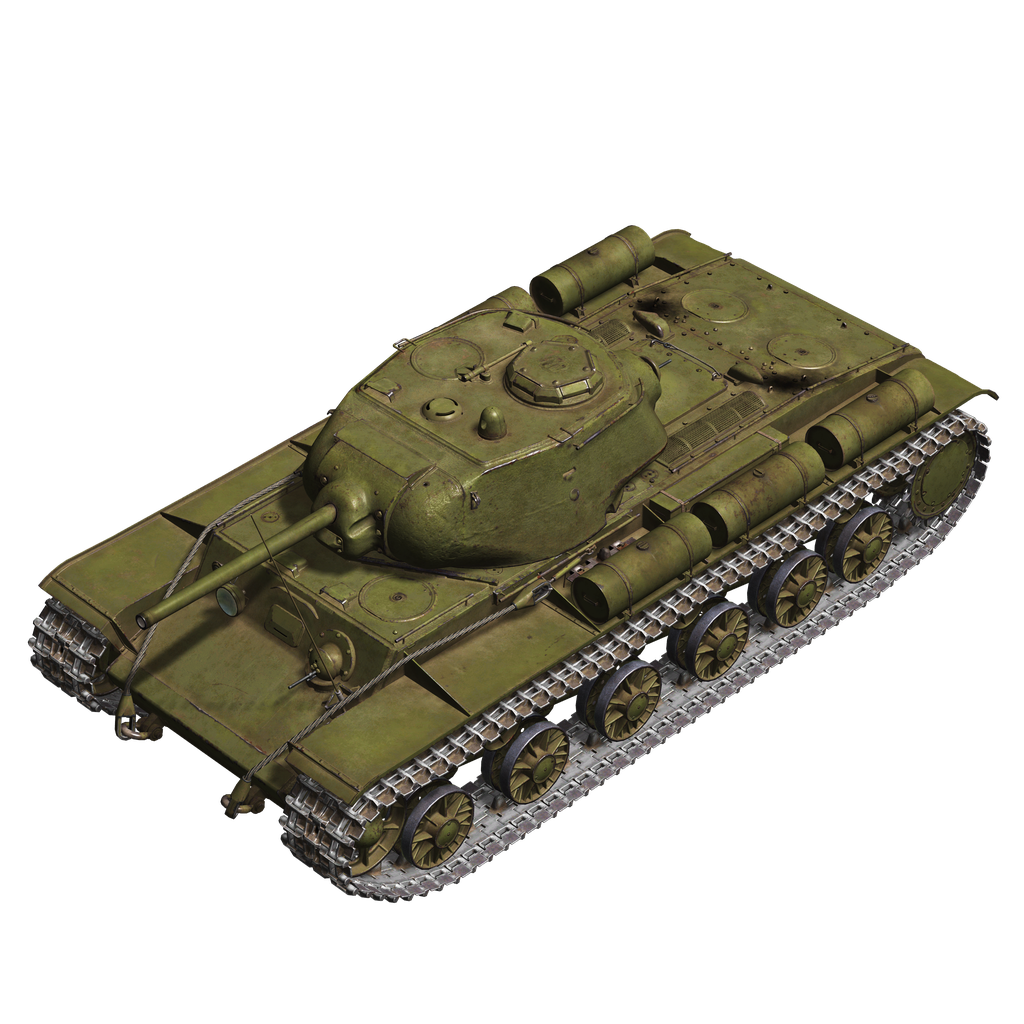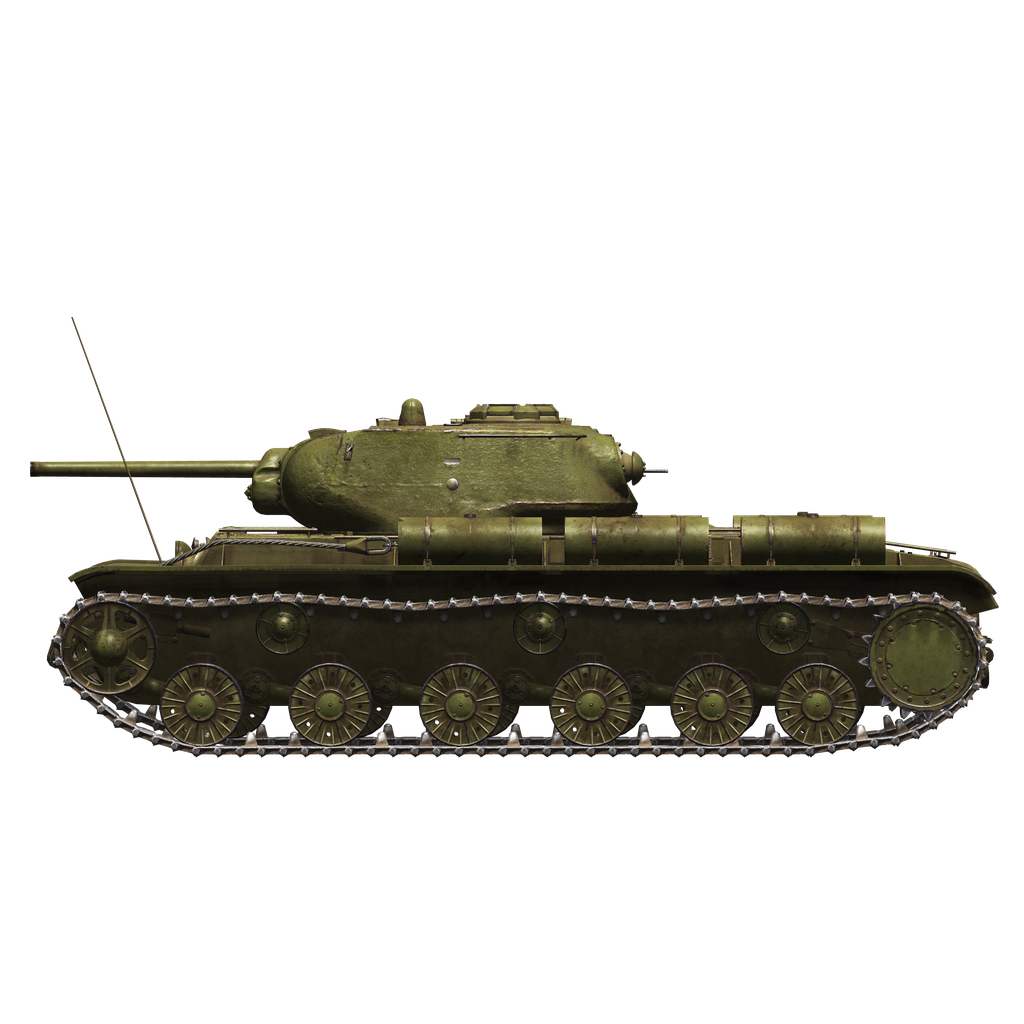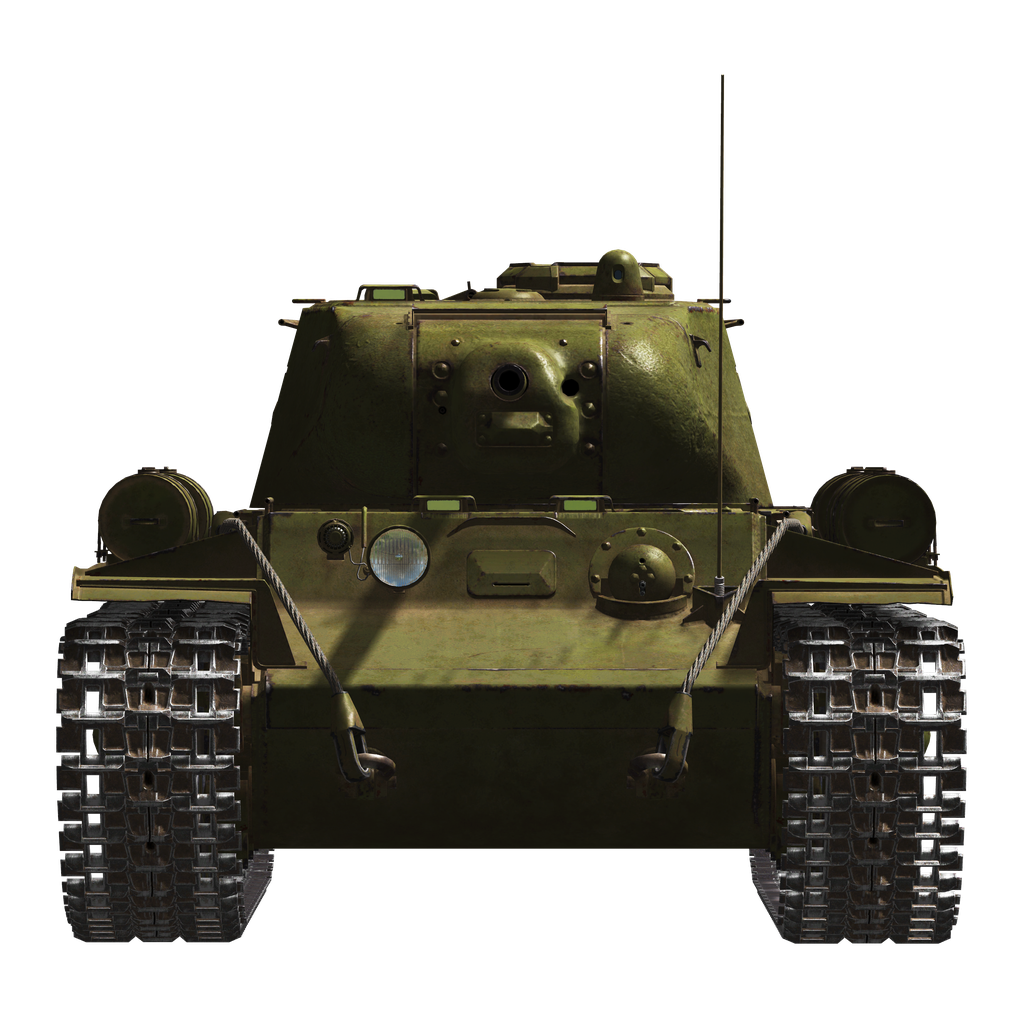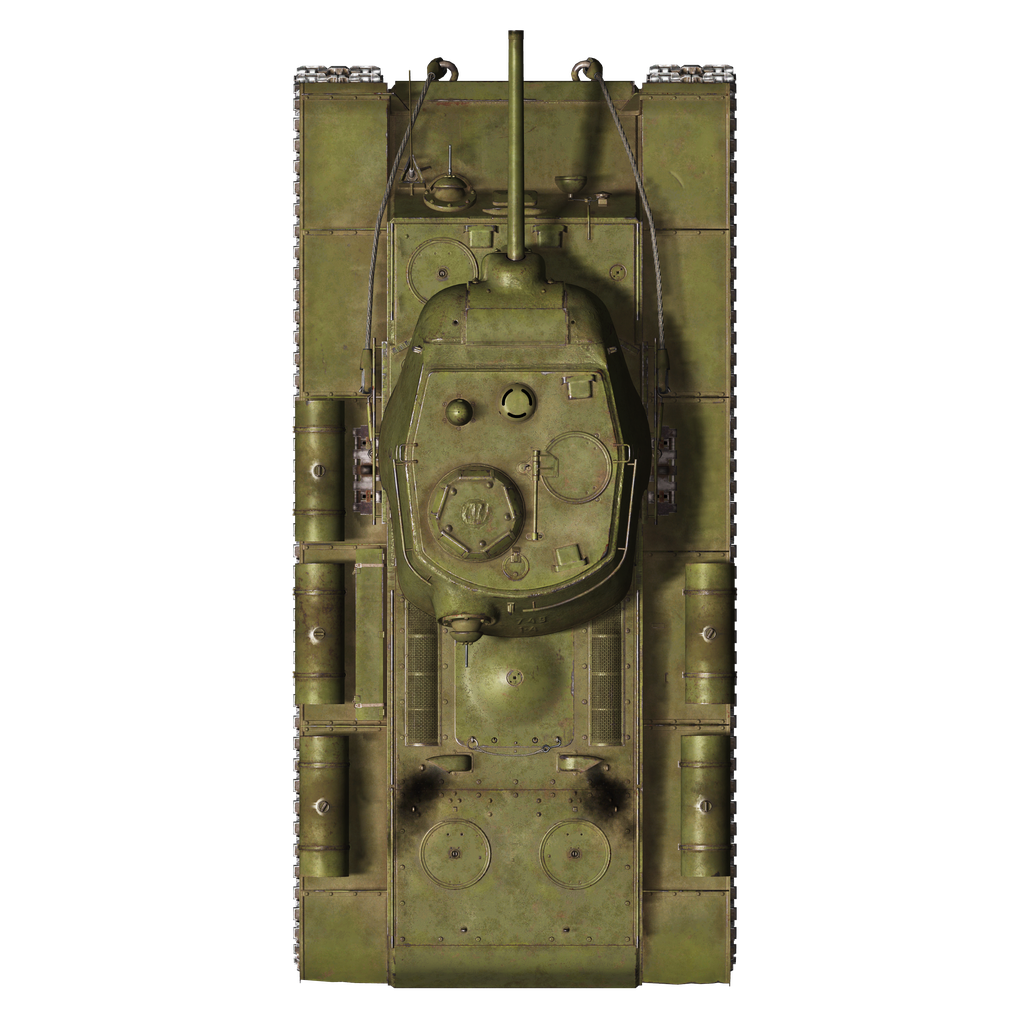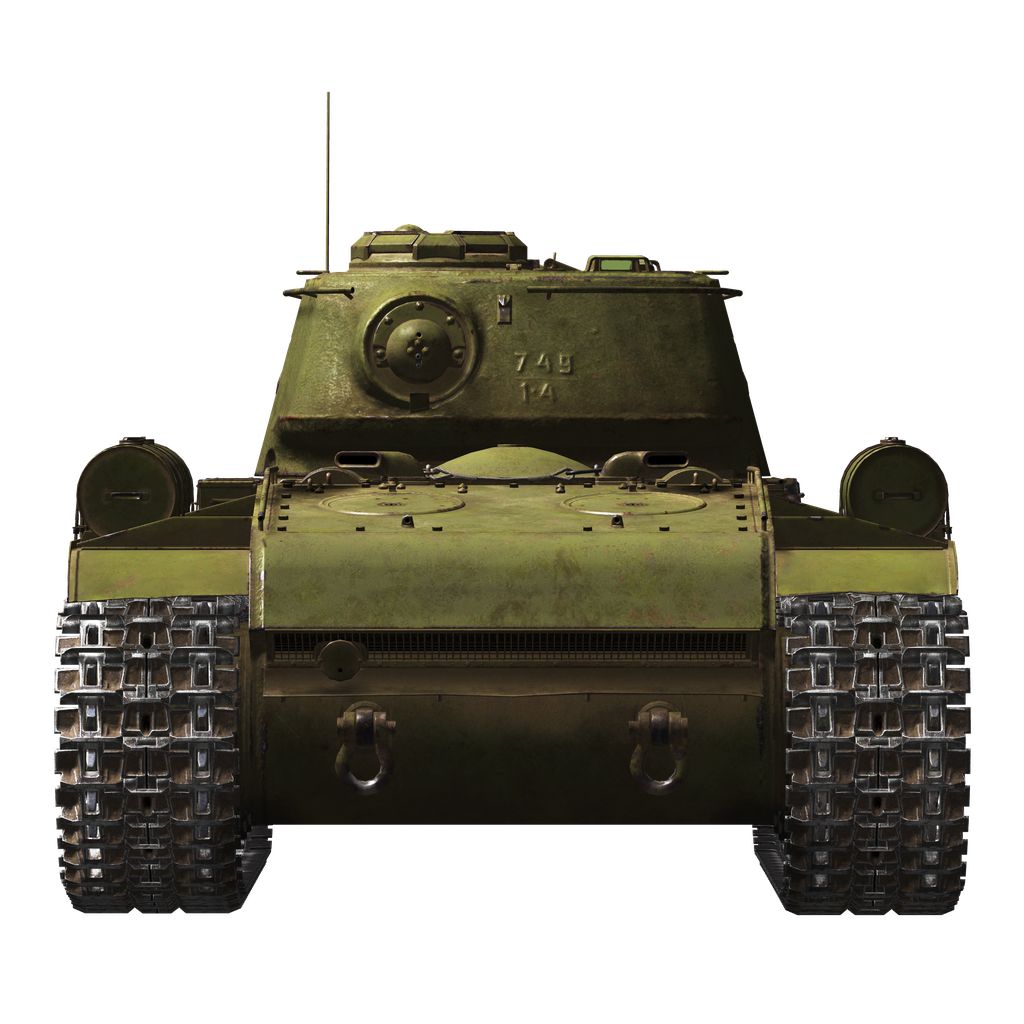The KV tank was introduced in 1939 as a result of work to create a new type of heavy tank with projectile-proof armor. The single-turreted tank, which was created on the design team’s own initiative, became the best heavy tank in the early period of the war. The armor, which was impervious to most German antitank and tank guns, and the powerful 76 mm gun allowed the crew to fight against superior enemy forces.
The advantages of the tank were overshadowed by its disadvantages. The vehicle proved to be protected and strong, but overweight. The low reliability of the transmission of these tanks became the talk of the town, and the mobility on the ground was also low. Often the vehicle could not even immediately climb a slope that other tanks could easily climb. In the early summer of 1942, under the leadership of Joseph Kotin, now the chief designer of the Chelyabinsk Tractor Plant, a lighter and more maneuverable modification of the KV was developed, which was given the designation KV-1S, or "high speed". In order to make the vehicle more maneuverable, the designers took the risk of reducing the armor, especially on the sides and the upper part of the rear. The reduction was small, from a few millimeters to one and a half centimeters, but it reduced the mass by 5 tons. In addition, a number of design changes were made to the tank to increase reliability and combat effectiveness.
The KV-1S had a classical design. The hull was welded from rolled armor plates, and the welds and joints between them were reinforced with angles and plates. The hull was divided into 4 sections: control, fighting, engine, and transmission. The control compartment was located in the front, and it housed the driver in the center and the gunner-radio operator on the left, along with the radio equipment and batteries. In the front armor plate there was a ball mount for a flexible machine gun from which the gunner-radio operator fired.
The fighting compartment was in the middle. Most of the ammunition was located at the bottom, and the fuel and oil tanks were on the sides. A turret with a cannon, two machine guns, sighting and observation equipment was installed above. Unlike previous modifications, the turret of the tank was a cast, oval, streamlined shape with a recess in the rear. It housed the gunner (to the left of the gun), the tank commander (behind the gunner), and the loader (to the right of the gun). On the roof of the turret was a fixed commander's cupola with five prisms for all-round vision.
The engine compartment was behind the fighting compartment and a partition was placed between the two. This was where the V-2K diesel engine was installed along with the equipment that ensured its operation. The transmission compartment was located in the aft section, also separated from the engine compartment by a bulkhead. Transmission components and assemblies were located here, including a newly designed transmission.
The armament of the tank consisted of a ZIS-5 cannon and three DT machine guns. The gun could fire BR-350 armor-piercing shells (weight 6.5 kg, initial velocity 660 m/s, armor penetration 72 mm at a distance of 500 m), BR-354P sub-caliber shells (3.02 kg, 950 m/s, 129 mm) and high-explosive fragmentation.
A total of 1,083 KV-1Ss were produced between July 1942 and August 1943. They began to be issued to units in September 1942 and were used for the first time at the Battle of Stalingrad. At first, they went to units in a mixed composition, together with the last KV-1s. In October of the same year, however, the creation of 15 separate Guards breakthrough tank regiments began, which began to receive heavy vehicles. On November 16, 1942, on the Southwestern Front, there were 3 breakthrough regiments, along with a total of 63 KV-1Ss. These tanks participated in all offensive operations. In January 1943 the tank units had 264 KV-1Ss — the maximum number of tanks of this type in service at the same time. They were gradually replaced by newer types of combat vehicles, but the KV-1S remained in service until the end of the war. For example, the 68th Tank Brigade, which took part in the battles at the Kyustrin bridgehead, had two tanks of this type in February 1945.
Used sources:
1. M. Svirin “Tank power of the USSR. Part 2 In difficult times." 2009
2. “KV-1S “Speed” KV” magazine “Our Tanks” No. 22, 2018
3. M. Baryatinsky “Heavy tank KV. Part 1" magazine "Armor Collection" No. 6(69) 2006
The tank was created by thedesign bureau of Chelyabinsk Tank Factory (ChTZ) during Summer 1942. It saw first combat action at the end of 1942 on Don and Voronezh front.
The tank was based on its predecessor, KV-1 heavy tank. Because of its low mobility and reliability, KV-1s (\'s\' means \'skorostnoy\' - speedy) was designed to be less armoured, but more mobile and reliable.
Its main gun was its main shortcoming - the 76 mm ZiS-5 gun it inherited from KV-1. Together with reduced armour it made the tank almost equal to much more widespread T-34/76.
Total 1083 KV-1s tanks were produced since July 1942 till August 1943.
Unladen weight: 43350 kg.
Length: 6.9 m.
Width: 3.3 m.
Height: 2.6 m.
Clearance: 450 mm.
Engine: В-2К, diesel.
Maximum power: 600 HP at 2000 RPM.
Maximum RPM: 2150 RPM.
4 speed gearbox with 2 stage demultiplier.
Maximum road speed:
1st low: 4.5 kph.
2nd low: 6.6 kph.
3rd low: 9.3 kph.
4th low: 12.9 kph.
1st high: 16.0 kph.
2nd high: 23.1 kph.
3rd high: 33.0 kph.
4th high: 45.4 kph.
Reverse low: 5.0 kph.
Reverse high: 17.9 kph.
Maximum offroad speed: 24 kph.
Fluids:
Internal fuel tanks capacity: 600 l.
Engine oil system capacity: 100 l.
Summer engine coolant: 150 l. of water
Winter engine coolant: 150 l. of 67% ethylene-glycol
Endurance range: 200 km.
Maximum oil consumption: 11 l/h.
Hull armour:
Upper front: 75 mm rolled armour.
Middle front: 50 mm rolled armour.
Lower front: 60 mm rolled armour.
Sides: 60 mm rolled armour.
Rear: 60 mm rolled armour.
Frontal roof: 40 mm rolled armour.
Rear roof: 30 mm rolled armour.
Bottom: 30 mm rolled armour.
Turret armour:
Front: 82 mm cast armour.
Sides: 82 mm cast armour.
Rear: 82 mm cast armour.
Roof: 30 mm rolled armour.
Cupola: 60 mm cast armour.
Gun mantlet: 70..82 mm cast armour.
Main gun: rifled, 76.2 mm Zis-5.
Barrel length: 41.6.
Elevation: +12°..-5°.
Ammo: up to 114 rounds.
Usable rate of fire: 8 rounds per minute.
Turret drive: electric, 30 seconds per rotation.
Ammunition:
BR-350B armour piercing high explosive (APHE): 6.5 kg, 660 m/s, 72 mm at 500 m.
BR-350BSP armour piercing solid (AP): 6.6 kg, 660 m/s, 73 mm at 500 m.
BR-354P armour piercing composite rigid (APCR): 3.02 kg, 950 m/s, 129 mm point blank.
OF-350 high explosive (HE): 6.2 kg, 680 m/s, 710 g explosives.
Machineguns: 7.62 mm Degtyarev DT.
Bullet mass: 9.8 g.
Muzzle velocity: 840 m/s.
Armour pentration at 100 m: 11 mm.
Rate of fire: 600 rounds per minute.
Coaxial: 22 mags, 63 rounds per mag (1386 rounds).
Bow: +-15°/+15°..-5°, 21 mags, 63 rounds per mag (1323 rounds).
Rear: +-15°/+-12°, 6 mags, 63 rounds per mag (378 rounds).
Gunsights:
TMFD-7 gunner scope-sight, field of view 15°.
PT4-7 gunner panoramic periscopic sight, field of view 26°.
Radio equipment:
VHF 9-RM transceiver.
4 intercom terminals.
